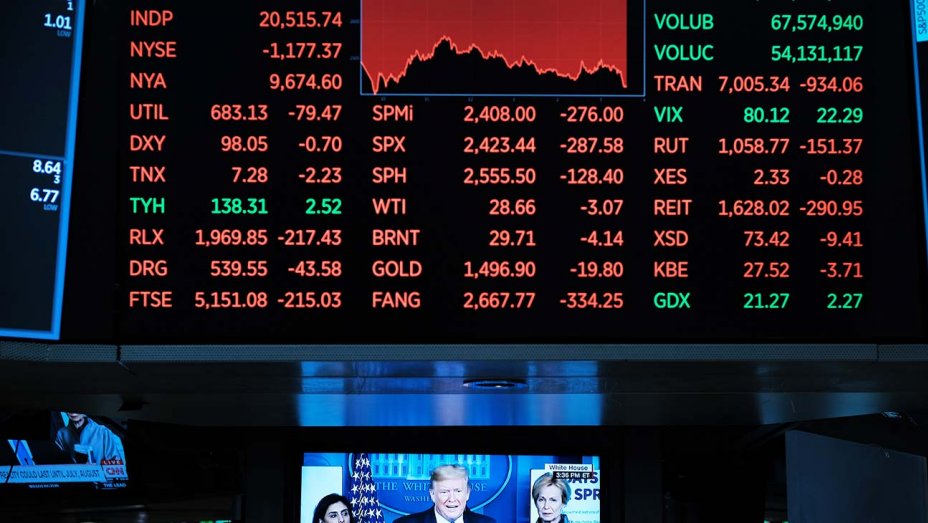The U.S. stock market today plunged 12 percent for its worst day in more than three decades as voices from Wall Street to the White House said the coronavirus is likely dragging the economy into a recession.
The S&P 500’s drop means it has plummeted nearly 30 percent since setting a record less than a month ago, and it is at its lowest point since the end of 2018.
Losses were steep today, accelerating in the last half hour of trading after President Trump said the economy may be headed for a recession and asked Americans to avoid gatherings of more than 10 people.
The plunge came even though the Federal Reserve rushed to announce a new round of emergency actions before markets opened for trading today.
The moves are aimed at propping up the economy and getting financial markets running smoothly again, but they may have also raised fears even further. Investors are also waiting for the White House and Congress to offer more aid to an economy that is increasingly shutting down by the hour.
The Dow Jones Industrial Average plunged 2,997 points, or 12.9 percent, and likewise the S&P 500 had its worst loss since the Black Monday crash of 1987. It surpassed Thursday’s loss of 10 percent for the Dow.
The market’s losses the last few weeks are the steepest since the 2008 financial crisis dragged the economy into the Great Recession.
Trump and other professional investors say the stock market could bounce back strongly as soon as the health experts get the virus under control.
The problem is that no one knows when that could be, and broad swaths of the economy are grinding closer to a standstill in the meanwhile, from parked airplanes to the nearly empty restaurant around the corner.
Today’s selling began immediately on Wall Street, sharp enough to trigger a temporary trading halt for the third time in the last two weeks.
Losses were even sharper in Europe before paring, and major indexes there fell between 4 percent and 6 percent.
Oil lost 9.5 percent and has more than halved this year.
“It’s impossible to say when and how we’re going to reach bottom,” said Danielle DiMartino Booth, CEO of Quill Intelligence.
The spreading coronavirus is causing businesses around the world to shut their doors.
While that can slow the spread of the virus, it’s also taking cash out of the pockets of businesses and workers.
That has economists slashing their expectations for upcoming months, and Wells Fargo Securities said Monday it now projects the U.S. economy will fall into a recession in the April-through-June quarter. Joel Prakken, chief U.S. economist at IHS Markit, projects the economy will shrink at a 5.4 percent annualized rate during the quarter, which would be its worst performance since the depths of the Great Recession.
The best-case scenario for many investors is that the economic shock will be steep but short, with growth recovering later this year after businesses reopen.
Pessimists, though, are preparing for a longer haul.
The range of possible outcomes has Wall Street swinging wildly, and the S&P 500 had its third straight day where it moved more than 9 percent — two down and one up.
Strategists at Goldman Sachs say the S&P 500 could drop as low as 2,000 in the middle of the year, which would be a 41 percent drop from its record set just a month ago.
Lower interest rates following the Fed’s moves will help them borrow cash at more affordable prices, but they will need more direct help.
Volatility appears to be the new normal following a dizzying week in which the Dow twice fell by more than 2,000 points and also record its biggest point gain ever — 1,985 points on Friday.
Last week’s drops also confirmed the end of the longest-ever bull market on Wall Street, which emerged from the financial crisis and ran for nearly 11 years.
Many investors expect markets to remain volatile as long as the number of new infections keeps accelerating.
